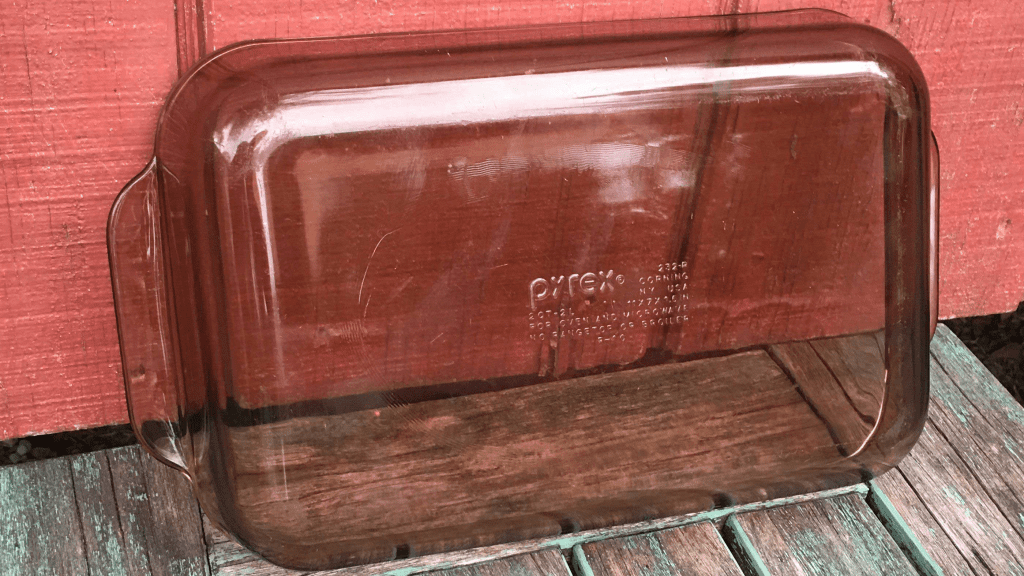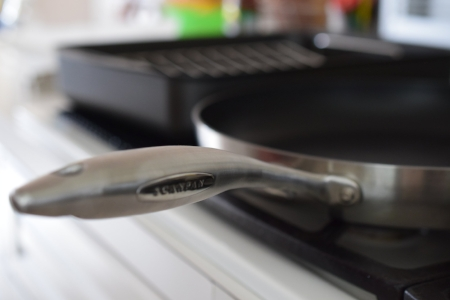Baking pans and sheets often bear the brunt of our kitchen endeavors, accumulating stubborn stains and residue over time. Whether you’re dealing with burnt-on food, grease stains, or discoloration, restoring your bakeware to its former glory is easier than you think. With a few household ingredients and simple techniques, you can clean your stained baking pans and sheets effectively. Here are some tried-and-true methods to make your bakeware look brand new again.
1. Cleaning Glass and Enamel Bakeware

Glass and enamel casserole dishes are popular for baking casseroles, lasagnas, and other hearty dishes. However, they can easily get stained with baked-on food residue. The key to cleaning them lies in two common household items: baking soda and liquid dish soap.
- Step-by-Step Cleaning Process:
- Start by sprinkling a generous amount of baking soda across the bottom of the dish.
- Add a few drops of liquid dish soap.
- Pour enough hot water to cover the bottom of the dish.
- Let the mixture sit for about 20 minutes to loosen any baked-on food.
- After soaking, use a scrub brush or sponge to scrub the surface in circular motions.
- Rinse thoroughly with warm water.
This method effectively cuts through grease and loosens stubborn food stains, making your glass and enamel bakeware look clean and shiny.
2. Restoring Stainless Steel and Cast Iron Pans
Stainless steel and cast iron pans are durable, but they are prone to stubborn stains and burnt-on residue. While cast iron requires special care, such as avoiding the use of soap, this cleaning method using vinegar and baking soda can safely clean both stainless steel and cast iron without damaging their surfaces.
- Step-by-Step Cleaning Process:
- Sprinkle a generous amount of baking soda over the stained surface of the pan.
- Pour distilled vinegar into the pan, letting the mixture fizz.
- Allow it to sit for a few minutes to break down the grime.
- Use a scrub brush or a sponge to scrub away any remaining residue.
- Rinse thoroughly and dry the pan.
For cast iron, remember to apply a thin layer of oil after cleaning to maintain its seasoning and prevent rust.
3. Tackling Stains on Aluminum Baking Sheets
Aluminum baking sheets are prone to discoloration and food buildup, especially after repeated use. One of the most effective methods for cleaning aluminum involves using a natural acid (lemon juice) combined with coarse salt for scrubbing.

- Step-by-Step Cleaning Process:
- Cut a lemon into halves.
- Sprinkle coarse salt over the surface of the baking sheet.
- Use the lemon half, flesh-side down, to scrub the salt into the pan in circular motions.
- The acid from the lemon helps to break down the stains, while the coarse salt acts as an abrasive to scrub off grime.
- Rinse the baking sheet with warm soapy water.
This method works wonders for aluminum baking sheets, leaving them clean and shiny without causing any scratches or damage.
4. Dealing with Non-Stick Bakeware
Non-stick bakeware requires a gentle approach to avoid damaging the coating. Over time, grease and food residue can build up, leading to discoloration or sticky surfaces. Here’s how to clean non-stick bakeware without compromising its surface.
- Step-by-Step Cleaning Process:
- Avoid using abrasive scrubbers. Instead, sprinkle baking soda onto the surface.
- Add a few drops of mild dish soap.
- Fill the bakeware with warm water and let it soak for 30 minutes.
- After soaking, use a soft sponge or cloth to gently scrub the surface.
- Rinse thoroughly with warm water and dry completely.
Regular maintenance of non-stick bakeware ensures that the coating stays intact and performs well over time.
5. How to Clean Copper Bakeware

Copper bakeware adds a touch of elegance to any kitchen, but it requires special care to prevent tarnishing and maintain its beautiful shine. With a mixture of salt, vinegar, and flour, you can effectively clean and polish your copper pans and dishes.
- Step-by-Step Cleaning Process:
- Mix equal parts of salt and flour in a small bowl.
- Add enough vinegar to create a thick paste.
- Apply the paste to the copper surface, gently rubbing it in with a soft cloth.
- Let the paste sit for 10-15 minutes to break down any oxidation or tarnish.
- Rinse the copper bakeware with warm water and dry it immediately with a soft cloth to prevent water spots.
Regular cleaning of copper bakeware will keep it looking as stunning as the day you bought it.
6. Preventing Stains and Grease Buildup
While cleaning stained bakeware is essential, preventing future buildup can save you time and effort in the long run. A few simple practices can help you maintain your bakeware’s cleanliness and prevent stubborn stains from forming.
- Use Parchment Paper or Silicone Mats: Lining your baking pans with parchment paper or silicone mats can prevent food from sticking and minimize grease buildup.
- Clean Immediately After Use: Don’t let food residue sit on your pans for too long. Clean your bakeware as soon as it cools down to prevent stains from setting in.
- Avoid Harsh Scrubbers: For most bakeware, especially non-stick or enamel-coated pans, avoid using steel wool or abrasive scrubbers, as they can damage the surface.
By incorporating these preventive measures, you’ll keep your bakeware in excellent condition and reduce the need for intensive cleaning in the future.
7. When to Replace Your Bakeware

While regular cleaning and maintenance can extend the life of your bakeware, there comes a time when it’s best to replace them. Here are a few signs that indicate it’s time to retire your old pans and invest in new ones:
- Visible warping or bending: If your baking pans have warped and no longer sit flat, it can lead to uneven cooking.
- Chipped or peeling coating: For non-stick pans, once the coating starts to peel, it’s time for a replacement to avoid ingesting harmful chemicals.
- Persistent stains: If no amount of cleaning can remove stubborn stains or food buildup, it might be time for an upgrade.
Replacing old bakeware ensures that your cooking remains efficient, and your food stays safe.
Conclusion
Cleaning stained baking pans and sheets doesn’t have to be a daunting task. By using simple household ingredients like baking soda, vinegar, lemon, and salt, you can easily restore your bakeware to its original shine. Whether you’re dealing with glass, stainless steel, aluminum, or non-stick pans, these methods will help you tackle stubborn stains and keep your kitchen essentials looking fresh. And remember, regular maintenance and smart preventative practices will save you time and effort in the long run, ensuring your bakeware serves you well for years to come.


